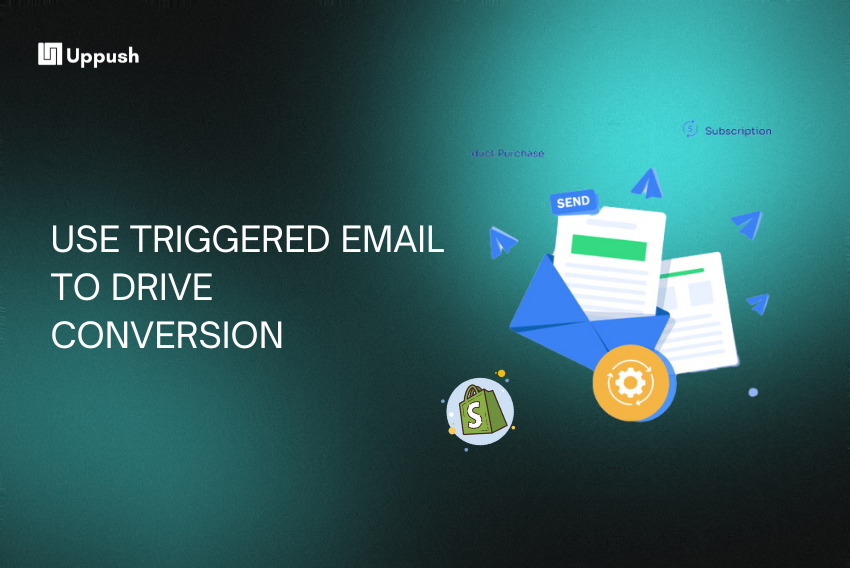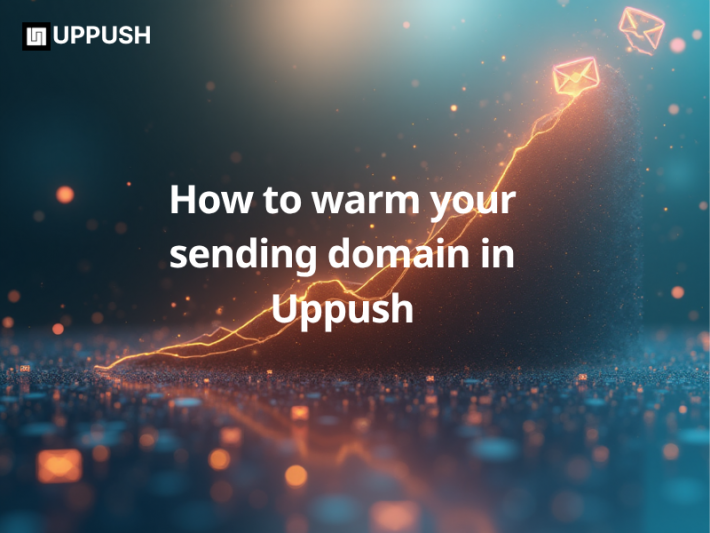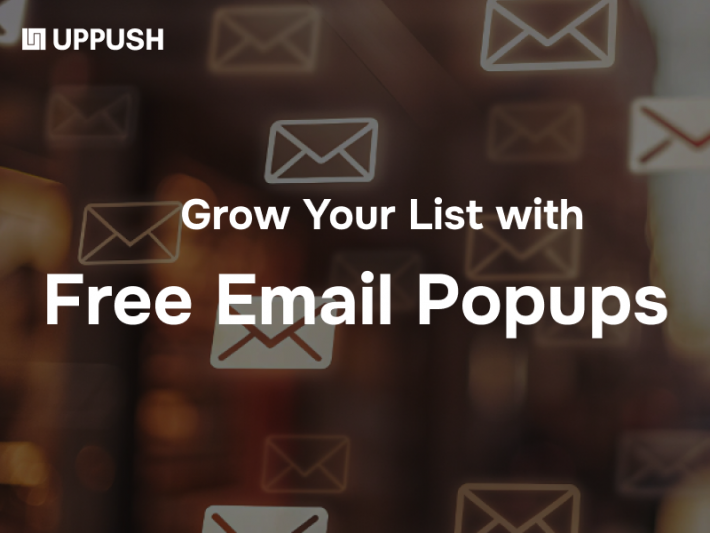Mastering Triggered Emails on Shopify: A Comprehensive Guide to Driving Conversions

In the ever-evolving world of e-commerce, staying ahead of the competition requires more than just a great product lineup. It demands a strategic approach to customer engagement and retention. Enter triggered emails – a powerful tool in the arsenal of any Shopify store owner looking to boost conversions and cultivate lasting customer relationships.
1. Introduction to Triggered Emails on Shopify
What Are Triggered Emails?
Triggered emails are automated messages sent to customers based on specific actions, behaviors, or events. Unlike traditional bulk email campaigns, triggered emails are highly personalized and timely, making them significantly more effective in driving conversions.
The Importance of Triggered Emails for Shopify Stores
For Shopify store owners, triggered emails represent a golden opportunity to:
- Increase customer engagement
- Boost sales and revenue
- Improve customer retention
- Enhance the overall shopping experience
By leveraging the power of automation and personalization, triggered emails allow you to connect with your customers at precisely the right moment, with the right message.
2. Benefits of Triggered Emails for Shopify Store Owners
Conversion-Driving Potential
Triggered emails boast impressive conversion rates, often significantly higher than traditional email marketing campaigns. This is due to their timely and relevant nature, which capitalizes on the customer’s current interests and actions.
Improved Customer Experience
By sending personalized, relevant content to your customers, you’re not just selling – you’re providing value. This approach enhances the overall customer experience, fostering loyalty and encouraging repeat purchases.
Time and Resource Efficiency
Once set up, triggered email campaigns run automatically, saving you time and resources while ensuring consistent communication with your customers.
3. Types of Triggered Emails for Shopify
Abandoned Cart Emails
These emails target customers who have added items to their cart but left without completing the purchase. Abandoned cart emails can significantly boost recovery rates and drive sales.
Welcome Series
A series of emails sent to new subscribers or customers, introducing them to your brand, products, and values. Welcome series help set the tone for your relationship with new customers and can encourage initial purchases.
Post-Purchase Follow-up
These emails are sent after a customer completes a purchase. They can include order confirmations, shipping updates, and requests for product reviews. Post-purchase emails help build trust and encourage repeat business.
Re-engagement Emails
Aimed at customers who haven’t interacted with your store in a while, re-engagement emails can help reignite interest and bring dormant customers back to your store.
4. Implementing Triggered Emails on Shopify
Shopify Apps for Email Automation
Shopify offers a range of apps that can help you set up and manage triggered email campaigns. Some popular options include:
- Klaviyo
- Omnisend
- Mailchimp
- Uppush: Web Push & Email Marketing
These apps integrate seamlessly with your Shopify store, allowing you to create sophisticated email automation workflows.
Setting Up Automation Workflows
To set up effective triggered email workflows:
- Define your goals for each email series
- Identify the triggers that will initiate each email
- Create compelling email content
- Set up the automation rules in your chosen app
- Test thoroughly before launching
Integrating with Existing Email Marketing Systems
If you’re already using an email marketing platform, check if it offers integration with Shopify. Many popular email marketing tools provide native integrations or can be connected via Zapier or similar services.
5. Optimizing Triggered Emails for Conversions
Personalization Strategies
Personalization is key to the success of triggered emails. Consider:
- Using the customer’s name in the subject line and email body
- Recommending products based on past purchases or browsing history
- Tailoring content to the customer’s preferences or demographics
Behavioral Targeting Techniques
Use customer behavior data to inform your triggered emails:
- Send product recommendations based on items viewed
- Trigger emails based on specific page visits
- Adjust email frequency based on engagement levels
Segmentation for Targeted Messaging
Divide your email list into segments based on factors like:
- Purchase history
- Engagement level
- Customer lifetime value
- Geographic location
This allows you to create more targeted and relevant email campaigns.
6. Designing Effective Triggered Emails
Creating Dynamic Content
Dynamic content adapts based on the recipient’s data or behavior. This can include:
- Personalized product recommendations
- Location-specific offers or information
- Content tailored to the customer’s lifecycle stage
Ensuring Mobile Responsiveness
With over 50% of emails being opened on mobile devices, it’s crucial to ensure your triggered emails are mobile-friendly:
- Use a responsive email template
- Keep subject lines short (30-40 characters)
- Use a single-column layout for easy mobile viewing
- Make CTAs large and easily tappable
Implementing A/B Testing for Optimization
Continuously improve your triggered emails through A/B testing:
- Test subject lines, email content, and CTAs
- Experiment with different send times
- Try various design elements and layouts
- Analyze results and apply learnings to future campaigns
7. Advanced Strategies for Triggered Emails
Cross-selling and Upselling Techniques
Use triggered emails to increase average order value:
- Recommend complementary products in post-purchase emails
- Offer upgrades or premium versions of purchased items
- Provide bundle deals based on past purchases
Leveraging Customer Lifecycle Stages
Tailor your triggered emails to different stages of the customer lifecycle:
- New customers: Focus on building trust and encouraging first purchases
- Regular customers: Offer loyalty rewards and exclusive deals
- At-risk customers: Provide incentives to re-engage
Drip Campaigns for Sustained Engagement
Create a series of triggered emails that nurture leads over time:
- Educational content about your products or industry
- Gradual introduction to different product lines
- Storytelling emails that build brand affinity
8. Measuring Success and Analyzing Performance
Key Metrics for Triggered Emails
Monitor these crucial metrics to gauge the success of your triggered email campaigns:
- Open rates
- Click-through rates
- Conversion rates
- Revenue per email
- Unsubscribe rates
Using Email Analytics for Insights
Avoid overwhelming your customers with too many emails while maintaining consistent engagement. Striking the right balance is crucial for effective communication:
- Set appropriate delays between triggered emails to prevent message fatigue
- Continuously monitor engagement rates to identify signs of email overload and adjust accordingly
- Implement a preference center allowing customers to set their desired email frequency and content types
- Use intelligent segmentation to ensure each email sent is highly relevant to the recipient
- Implement a “cooling off” period after high-engagement events to avoid message saturation
Continuous Improvement Strategies
Avoid overwhelming your customers with too many emails while maintaining consistent engagement. Striking the right balance is crucial for effective communication:
- Set appropriate delays between triggered emails to prevent message fatigue
- Continuously monitor engagement rates to identify signs of email overload and adjust accordingly
- Implement a preference center allowing customers to set their desired email frequency and content types
- Use intelligent segmentation to ensure each email sent is highly relevant to the recipient
- Implement a “cooling off” period after high-engagement events to avoid message saturation
9. Best Practices for Triggered Emails on Shopify
Maintaining Customer Privacy and Preferences
Avoid overwhelming your customers with too many emails while maintaining consistent engagement. Striking the right balance is crucial for effective communication:
- Set appropriate delays between triggered emails to prevent message fatigue
- Continuously monitor engagement rates to identify signs of email overload and adjust accordingly
- Implement a preference center allowing customers to set their desired email frequency and content types
- Use intelligent segmentation to ensure each email sent is highly relevant to the recipient
- Implement a “cooling off” period after high-engagement events to avoid message saturation
Balancing Frequency and Relevance
Avoid overwhelming your customers with too many emails while maintaining consistent engagement. Striking the right balance is crucial for effective communication:
- Set appropriate delays between triggered emails to prevent message fatigue
- Continuously monitor engagement rates to identify signs of email overload and adjust accordingly
- Implement a preference center allowing customers to set their desired email frequency and content types
- Use intelligent segmentation to ensure each email sent is highly relevant to the recipient
- Implement a “cooling off” period after high-engagement events to avoid message saturation
Integrating with Overall Marketing Strategy
Ensure your triggered emails align with your broader marketing efforts:
- Maintain consistent branding and messaging across all channels
- Use triggered emails to support omnichannel marketing campaigns
- Coordinate triggered emails with other marketing activities (e.g., social media, paid ads)
10. Conclusion
Recap of Benefits
Triggered emails offer Shopify store owners a powerful tool for driving conversions, enhancing customer experience, and boosting overall sales. By leveraging personalization, automation, and data-driven insights, you can create highly effective email campaigns that resonate with your audience and deliver tangible results.
Future Trends in Triggered Emails for E-commerce
As we look to the future, several trends are likely to shape the landscape of triggered emails in e-commerce:
- Increased use of AI and machine learning for hyper-personalization
- Integration of interactive elements within emails (e.g., AMP for Email)
- Greater emphasis on privacy and data protection in email marketing
- Expansion of triggered emails to new channels (e.g., SMS, push notifications)
By staying ahead of these trends and continuously refining your triggered email strategy, you can ensure that your Shopify store remains competitive and continues to deliver value to your customers.
Remember, the key to success with triggered emails lies in understanding your customers, providing relevant and timely content, and continuously optimizing based on performance data. With the right approach, triggered emails can become one of your most valuable tools for driving conversions and building lasting customer relationships on your Shopify store.


